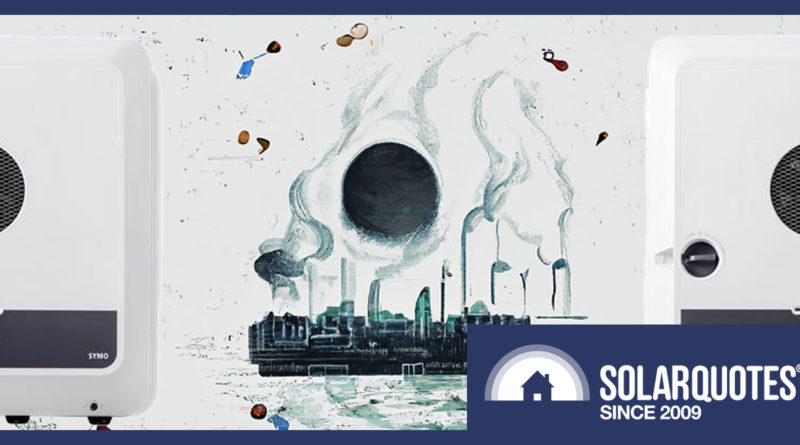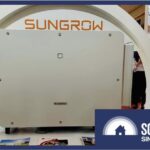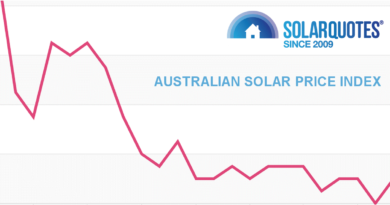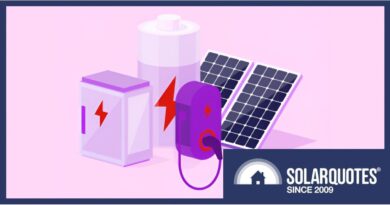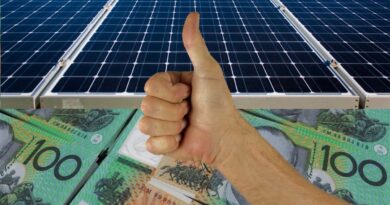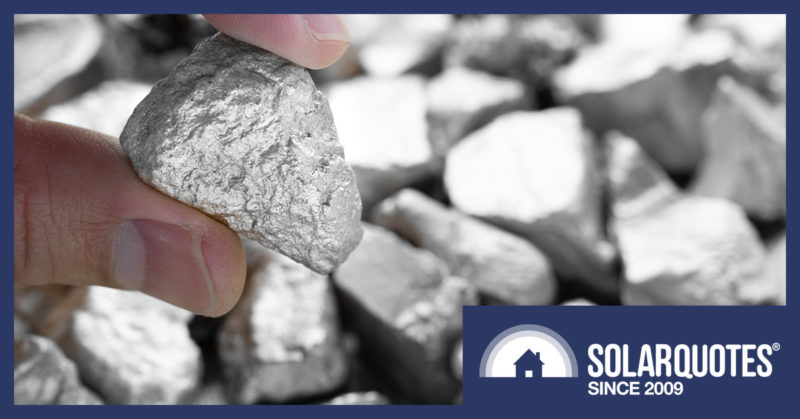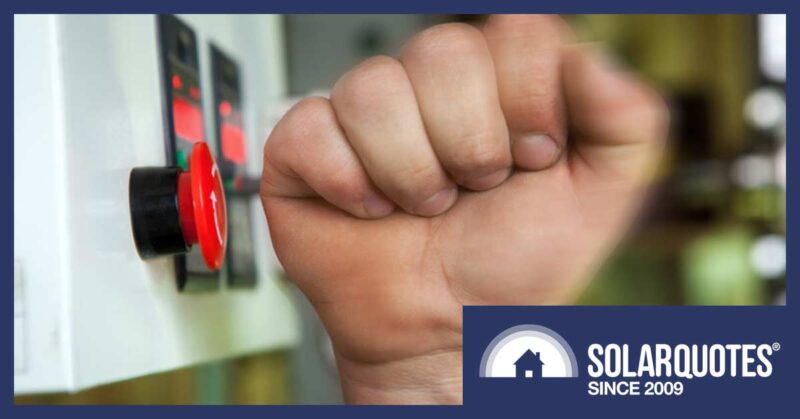Fronius Study: Energy Payback Of Solar Is Under 1 Year In Australia
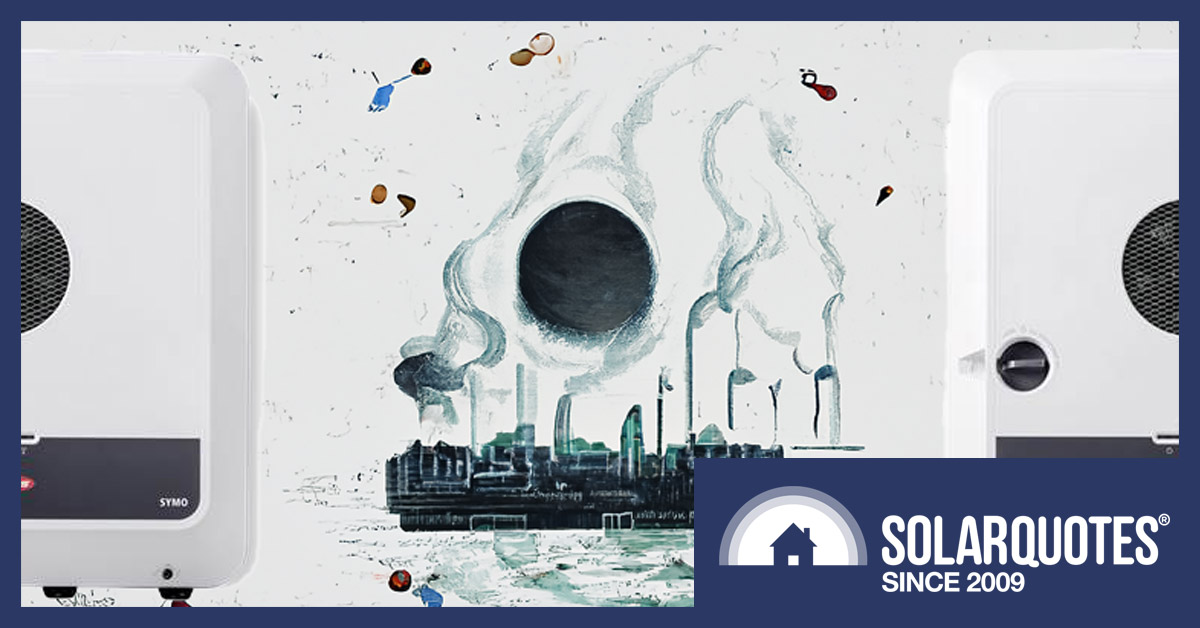
Image Credit: Finn Peacock + AI
Fronius says Australian rooftop solar + inverter has CO2 & energy payback under one year.
Last month, a huge, hulking Austrian handed me a physical report called:
Fronius GEN24 Plus — A Benefit For The Environment Life Cycle Assessment (LCA)
I was shocked. I’d forgotten people could still write reports on paper.
I wasn’t as shocked by its contents, but two things leapt out and punched me in the eyeballs:
- Fronius assumes their GEN24 inverters will have a life span of 20 years.
- In Australia, the CO2 and energy payback times of rooftop solar systems are under 1 year.
Fronius says their new solar inverters are very green — and I have no trouble believing it. But the payback times should be similar for any new rooftop solar power system, even if the inverter isn’t as environmentally friendly as theirs.
Fronius published this report last year. Back then Michael mentioned Fronius was spruiking the sustainability of their new inverter. I ignored it at the time due to a debilitating case of advanced laziness. But now I’ve experienced physical Austrian intervention, I’ve decided to go through it and give you all the juicy details.

These Austrians take their environmental protection very seriously.
This Life Cycle Assessment was an independent effort by the German Fraunhofer Institute, so we can be confident the information is good. While I think it loses a little something in its translation from the original Austrian, it’s not difficult to read.
In this article I’ll tell you:
- A little about Fronius GEN24 inverters.
- What a Life Cycle Assessment is.
- Details of the GEN24 Life Cycle Assessment.
- The CO2 and energy payback periods it gives for rooftop solar in Australia.
If that’s not enough to convince you to read on, perhaps this picture of a pretty person standing next to some sketchy hardware will do the trick:
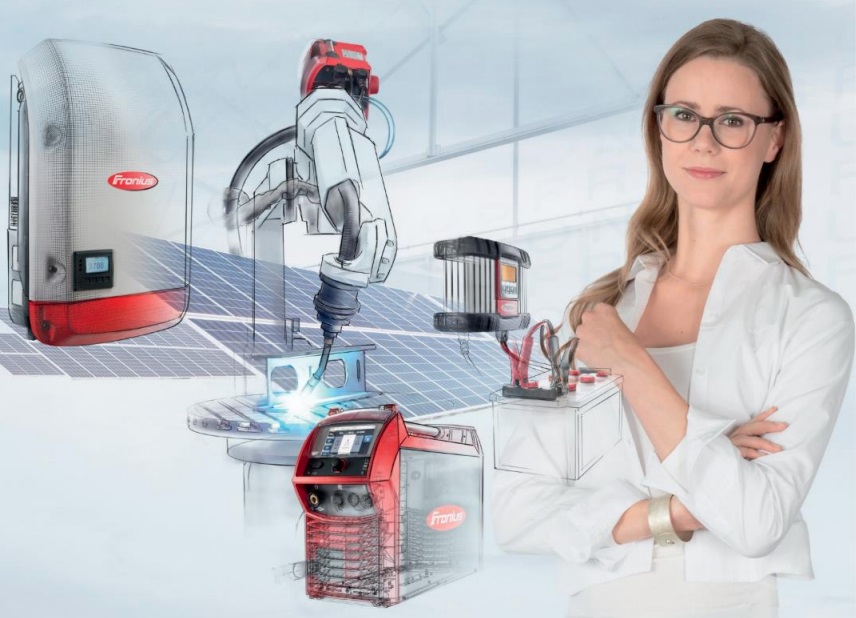
We can be certain this is an actual Fronius worker and not just an Austrian model they shoved into the world’s shortest lab coat, because she is wearing an oversized anti-static wrist strap.
What The Hell Is A GEN24 Plus?
The GEN24 Plus inverter is the latest in the Fronius line of solar inverters. Like all Fronius inverters, it’s very flexible, which makes solar power system design easy. It hasn’t been around long, but I presume that — like other Fronius inverters — it’s very reliable.
It comes in single-phase Primo and three-phase Symo versions. The Life Cycle Assessment focuses on the Symo GEN24 10.0 Plus. This is unfortunate because I don’t know of any installations using this inverter in Australia. But Primo GEN24 single-phase inverters are now available.
Some details of these Fronius inverters are:
- They are hybrids and, according to Fronius, can be used with some — but not all — BYD Battery Box Premium HVS and HVM batteries. Fronius also says you can use the Symo GEN24 Plus with LG Chem RESU 7H and 10H batteries.
- It can provide backup power without batteries from one powerpoint if the solar panels are supplying sufficient power.
- It is quieter than previous Fronius inverters. This is because its external cooling fan is larger and slower-moving and so doesn’t sound at all like a jet taking off.
- The single-phase Primo ranges from 3-6 kilowatts in capacity, while the three-phase Symo is from 3-10 kilowatts.
- Their efficiency ranges from 96.8% for the smallest GEN24 Primo to 97.9% for the largest Symo GEN24
- Its warranty is 5 years. If the inverter is registered, you can get an extra 5 years of warranty that only covers parts.
Non-Hybrid GEN24 Inverters
The Fronius GEN24 Plus inverters are hybrids, but there are less expensive non-hybrid versions that are just GEN24 without the “Plus”. They are identical, except that the GEN24 can’t be used with a battery because its hybrid functions have been turned off. If you get one and later decide you want to install a battery, you can unlock its hybrid capability, but only if you pay Fronius a fee.
I’m not a fan of companies nobbling products and then charging money to unlock capability they already have. I think it’s detrimental to an organization’s soul to not give customers the best product possible. But I suppose there is some justification in this case. A hybrid inverter with a battery will be used day and night. This extra use will increase the chance of it failing and needing a repair or replacement, either under its warranty or under the protections provided by Australian Consumer Guarantees.
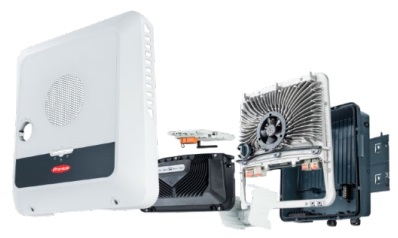
Don’t worry; the GEN24 Plus doesn’t come like this. It’s just an illustration showing its different parts. It’s not an Ikea inverter.
What The Hell Is A Life Cycle Assessment?
There are two main ways I would characterize a Life Cycle Assessment:
- A detailed quantification of the CO2 emissions and/or energy consumption resulting from all steps in producing and distributing a product.
- A bit of a wank.
A Life Cycle Assessment can estimate how much harm a product is likely to cause the environment, but that’s not nearly as useful as reducing environmental harm. Some governments — including Australian ones — have used research and assessment as a smokescreen1 to hide inaction on actually cutting greenhouse gas emissions.
If we introduced a carbon price that increased over time until it equalled the cost of removing carbon from the atmosphere and sequestering it2, it would mostly eliminate the need to do Life Cycle Assessments because the net amount of greenhouse gas emissions from most products would be zero.
When I say that Life Cycle Assessments are a bit of a wank, I’m not saying they are bad. If people have nothing better to do, there’s no harm in a good LCA. Working one out can be stimulating and can help people prepare to cut emissions for real in the future. I’m just saying Life Cycle Assessments are less productive than cutting emissions.
The GEN24 Plus Life Cycle Assessment
To perform the GEN24 Plus Life Cycle Assessment, Fronius and Fraunhofer looked at emissions and energy consumption from:
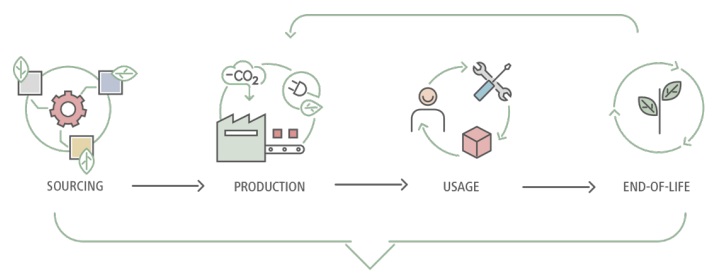

- Sourcing: This involves the components Fronius purchases to make the inverter.
- Production: The factory assembly of components into the inverter.
- Usage: Emissions and energy consumption from the solar inverter’s use and repairs.
- End-of-life: What happens after the Fronius inverter becomes a hunk of junk.
Life Cycle Assessments can look at things other than greenhouse gas emissions and energy use. For example, Fraunhofer also investigated:
- Metals resource depletion
- Human toxicity (This is not about how toxic humans are. It’s a combination of material toxicity and the likelihood of human exposure.)
- Particulate matter emissions
But to keep things simple, these didn’t make it into the Fronius report. While it would be nice to have details, I’m sure resource depletion, toxin exposure, and particulate matter emissions from rooftop solar are vastly less than from burning coal.
Sourcing — Components
Components that Fronius uses to make their solar inverters are made worldwide, but mostly in Europe and Asia. Fossil fuels provide a portion of the energy needed to make these components. Often it’s a large portion, but it is decreasing:
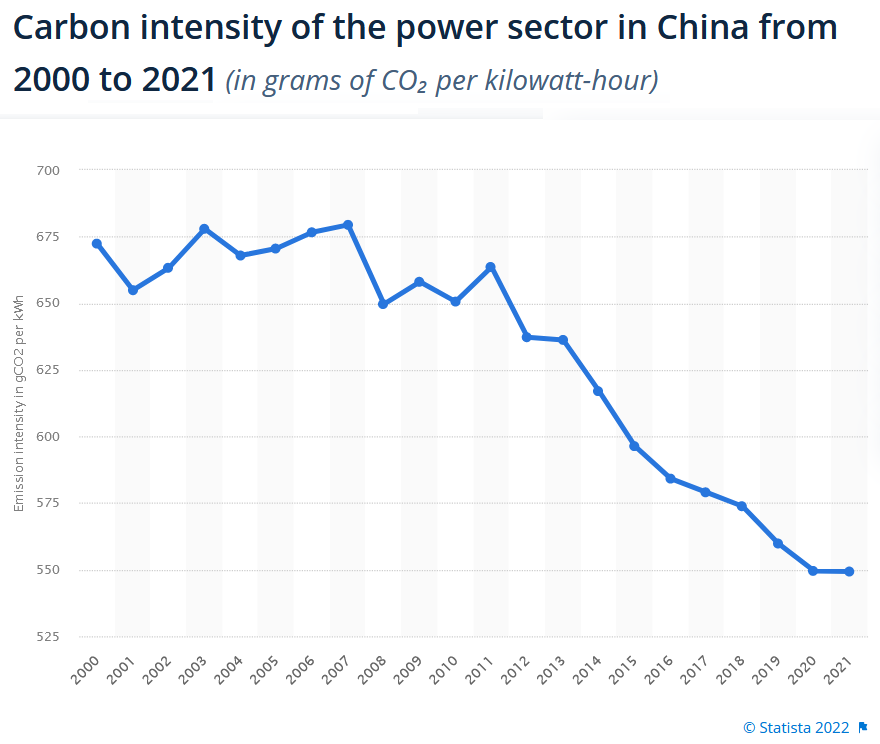
China is by far the world’s largest producer of electronic components. Over the past ten years, their CO2 emissions per kilowatt-hour generated have declined 20%. Emissions per kWh are considerably less than in Australia. While electricity isn’t the only energy source used to make electronics, as fossil fuels can be used directly to produce process heat, this reduces emissions from electronics production. (Image: Statista)
Not including packaging, a Fronius Symo 24 weighs 23.4kg. Two-thirds of this are the following materials:
- Galvanized steel: 1.97kg
- Technical plastics: 5.43kg
- Aluminium: 6.79kg
- Circuit boards: 0.59kg
- Capacitors: 0.75kg
Because their manufacture is energy-intensive, the electronic components result in far more emissions than steel, plastics, or aluminium. The graph below shows the kilograms of CO2 emissions per kilogram of these materials:
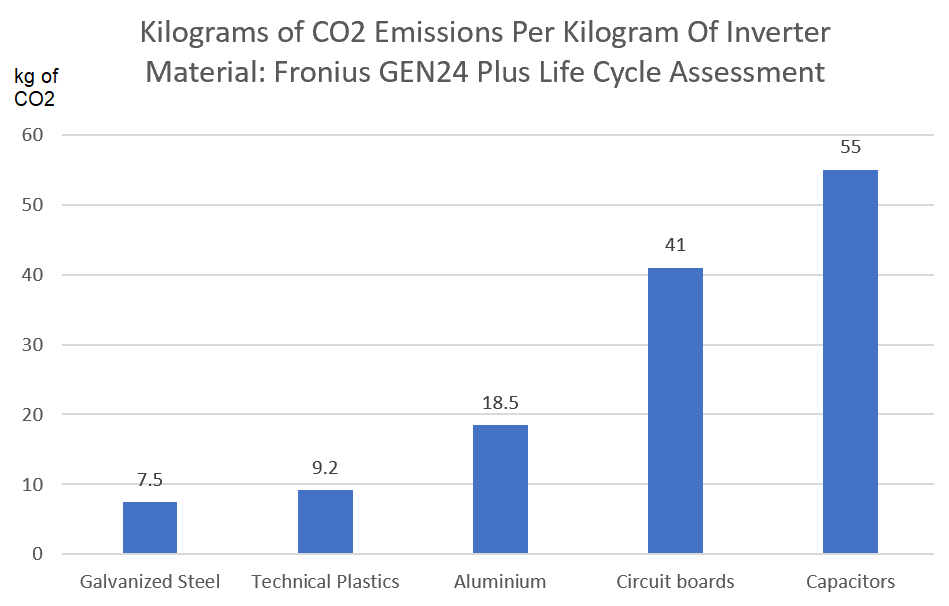
As this graph shows, electronics result in far more CO2 emission per kilogram than steel, plastic, or the hybrid inverter’s big aluminium heat sink.
All up, the authors estimated components to be responsible for 57.3% of the Life Cycle CO2 emissions.
Production
After Fronius gets the components, assembling them into an inverter is only responsible for 1.5% of lifecycle emissions. It’s almost trivial because putting components together in a factory is far less energy-intensive than making them. This is helped by Fronius making an effort to source their energy from rooftop solar and other clean sources.
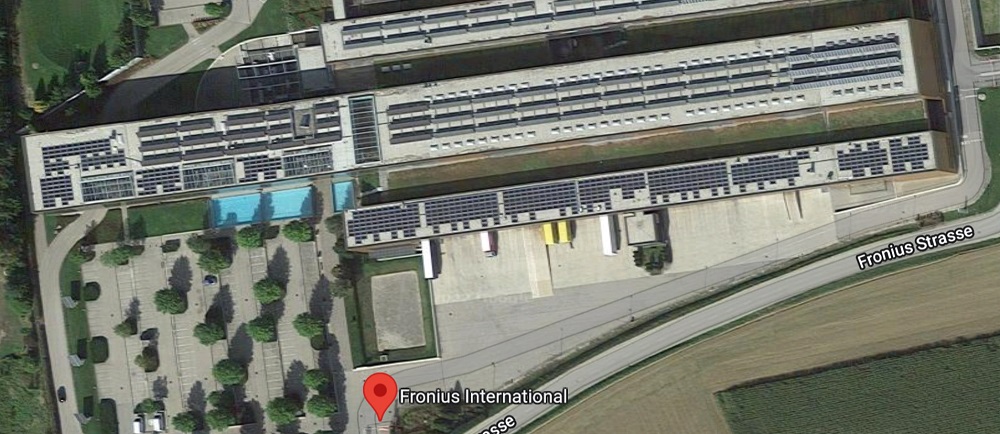
As you can see, the Fronius factory in Austria has rooftop solar. I’d be pretty cranky with them if it didn’t. (It looks like they have some First Solar cadmium telluride panels up there, but I’d need a closer look to tell.)
If we add emissions from transport, production only accounts for 5.7% of lifecycle emissions.
Usage
The five most important factors affecting emissions from the use of solar inverters are:
- Assumed lifespan.
- Energy efficiency.
- Night-time energy consumption.
- Location and if a battery is part of the system.
- Whether any components need replacing over its lifespan.
Lifespan:
The LCA assumes the Fronius inverter’s lifespan will be 20 years. Because the company has a reputation for reliability, I have no problem believing the typical Fronius GEN24 inverter will last around two decades or more.
Efficiency:
The higher the solar inverter’s efficiency, the more clean energy it will provide to a home or export to the grid, and this will result in a greater reduction in fossil fuel generation. The Life Cycle Assessment assumed an average inverter efficiency of 97%. This is reasonable as the Symo GEN24 Plus 10.0 has an average efficiency of 97.9%.
The Fronius inverter draws a small amount of power at night. While not much, this can add up to 960 kilowatt-hours over 20 years, which is nothing to sneeze at. If you do sneeze at it, stay the hell away from me. I don’t want to catch what you’ve got.
Location & Usage:
Location is important because a solar system in Australia will produce more energy than one in a country like Norway. Also, because Norway’s grid is almost entirely renewable, the Australian one will reduce emissions more per kilowatt-hour generated.3.
Whether or not a system has a battery attached will also affect emissions and energy payback periods. If a battery is used to store clean energy that otherwise would have gone to waste it can greatly reduce emissions, but in some other situations, it can increase them.
Repairs & Replacement:
If the inverter suffers a breakdown and requires replacement components, those spare parts will have their own embodied emission and energy costs. But on the bright side:
- A repair can be far less emission-intensive than entirely replacing a solar inverter.
- Replacing old parts should increase the hybrid inverter’s average remaining lifespan.
- Parts made in the future should result in lower emissions than ones made today and could potentially result in zero net emissions.
End Of Life
How the inverter is disposed of after it dies affects emissions. If it’s thrown in a tip and burned it will add CO2 to the atmosphere, but if recycled it can reduce overall emissions and energy use by reducing the need for new materials. A lousy end-of-life experience can result in 7.6 kg of CO2 added to the atmosphere4. But if it is disassembled and carefully recycled, it can effectively reduce emissions by an estimated 64 kg of CO2.
Inverter Carbon Footprint
If the estimated CO2 emissions are all thrown into one graph, it looks like this for a Fronius Symo GEN24 10.0 inverter used in Australia:


The above graph shows that, after components, energy losses are the largest contributor to carbon emissions. But this estimate does not consider reductions in emissions that will occur as the grid gets greener over the next 20 years. In actual use in Australia, I expect the portion of carbon emissions from losses will be considerably lower.
Emissions As Part Of A Rooftop Solar System
The Life Cycle Assessment then looked at the CO2 footprint when the inverter is used as part of a rooftop solar system under the following conditions:


Unfortunately, the people who wrote this apparently don’t appreciate Australia is more than just two letters larger than Austria and didn’t give a more precise location than our entire continent. Being precise is important because there’s a big difference in solar electricity output between Hobart and Oombulgurri. But, as far as I can tell, they have used figures representative of a typical rooftop solar power system in Australia.
They also don’t give information on the solar system, so we don’t know if its solar panel capacity is larger than the inverter capacity. My guess is they assumed the panel capacity is one-third larger because that’s the usual effective maximum for most Australian installations, and the larger the panel capacity, the smaller their solar inverter’s portion of the carbon footprint will be.
No mention is made of the Fronius inverter requiring repairs in its assumed 20-year lifespan. It is assumed the hybrid inverter is recycled but without careful dismantling. I think that’s a reasonable assumption for Australia, as we’re not known for precision recycling. The entire system is assumed to last for 20 years, even though solar panels — decent ones at least — can last much longer.
A battery is not included as part of the system.
The rooftop solar system’s carbon footprint is estimated to come to 38 grams of CO2 per kilowatt-hour generated. That’s only around 4% of the roughly 1 kg of CO2 emitted per kilowatt-hour by Australian coal generation. A breakdown of how the different parts of the system are responsible for its carbon footprint is shown below:
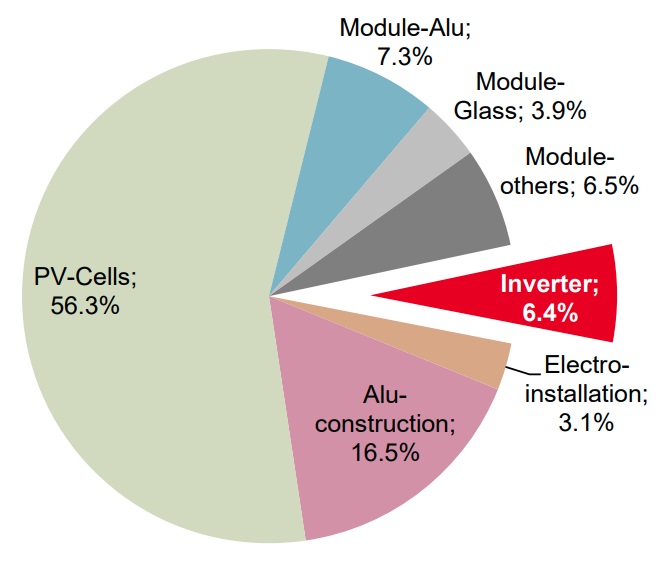
This pie graph shows what percentage of emissions the different parts of a solar system installed with a Fronius Gen24 10.0 inverter are responsible for when installed in Australia.
As the pie chart shows, the Fronius inverter is estimated to only be responsible for 6.4% of the total carbon footprint. That’s an impressively small portion and less than I would have guessed.
CO2 & Energy Payback Periods
The Life Cycle Assessment found the carbon payback time for a rooftop solar power system using a Fronius Symo GEN24 Plus 10.0 solar inverter was 0.8 years in Australia. This means in under 10 months the clean energy it produces will reduce fossil fuel emissions by an amount equal to manufacturing and installing the entire system.
The energy payback period was slightly longer at 0.9 years in Australia. So in just under 11 months, it will produce energy equal to what was required to create and install the entire solar system.
The good news is that these figures should be very similar for the average new solar system in Australia, no matter what solar inverter is used. Even if another manufacturer’s solar inverter has a 50% higher carbon and energy footprint, the CO2 and energy payback times for an otherwise identical solar system will still be under one year.
These results mean if you’re considering replacing an old solar system with something larger, there’s no need to worry about the old system’s carbon footprint, as that was paid off long ago. If its carbon footprint was twice that of a modern system, it would have taken under two years. Provided the system you replace it with is larger, it won’t take long for you to be ahead on avoided emissions.
Footnotes
- In Australia, the smokescreens have been coal-flavoured. ↩
- I think it will cost less than $100 Australian per tonne to take a tonne of carbon out of the air and store it for a long time in plants or minerals. Hopefully, under $80. Anyone suggesting a carbon price of hundreds of dollars should take a Bex and have a nice lie down. ↩
- All else equal, installing a rooftop solar system in Norway will cause that country to export more clean energy to other countries, so there can still be emission reductions from Norwegian solar, but the reductions are clearer and more direct in Australia. Over the past 12 months, 58.7% of our on-grid electricity came from coal. ↩
- I guess this means there are about 2 kilograms of fossil carbon in the hybrid inverter. Probably mostly in the plastics. ↩
Original Source: https://www.solarquotes.com.au/blog/fronius-solar-energy-payback/

